It looks like you're using an Ad Blocker.
Please white-list or disable AboveTopSecret.com in your ad-blocking tool.
Thank you.
Some features of ATS will be disabled while you continue to use an ad-blocker.
16
share:
Metal detectorist Derek McLennan has found a haul of Viking treasure which is being described as one of the most important Viking hoards ever found in
Scotland , it's believed the haul dates back to the 9th or 10th Century and contains items from Ireland , Scandinavia and various places in central
Europe.
I commend Mr McLennan on both his find and being a credit to Metal detectorists for sharing it with the world.
In total, more than 100 items were recovered, including armbands, a cross and brooches.
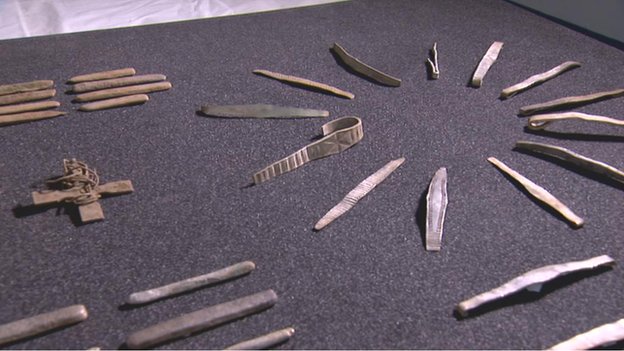
Large Silver alloy Carolingian Lidded Vessel
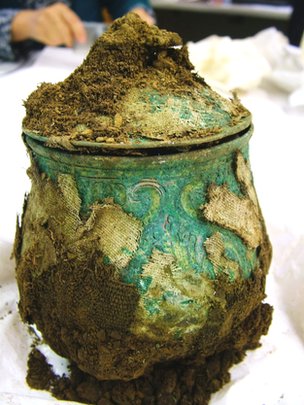
As far as I'm aware this has just been announced so hopefully more pictures will be released of some of the other objects but the Carolingian Lidded Vessel seems to be the star of the show at the moment.
I commend Mr McLennan on both his find and being a credit to Metal detectorists for sharing it with the world.
He said: "I dragged myself out of my sick bed because I had two friends that wanted to detect and I'm a bit of an obsessive. "I unearthed the first piece, initially I didn't understand what I had found because I thought it was a silver spoon and then I turned it over and wiped my thumb across it and I saw the Saltire-type of design and knew instantly it was Viking. "Then my senses exploded, I went into shock, endorphins flooded my system and away I went stumbling towards my colleagues waving it in the air."
In total, more than 100 items were recovered, including armbands, a cross and brooches.

Large Silver alloy Carolingian Lidded Vessel

Fiona Hyslop, Cabinet Secretary for Culture and External Affairs said: "The Vikings were well known for having raided these shores in the past, but today we can appreciate what they have left behind, with this wonderful addition to Scotland's cultural heritage. "It's clear that these artefacts are of great value in themselves, but their greatest value will be in what they can contribute to our understanding of life in early medieval Scotland, and what they tell us about the interaction between the different peoples in these islands at that time
www.bbc.co.uk...
As far as I'm aware this has just been announced so hopefully more pictures will be released of some of the other objects but the Carolingian Lidded Vessel seems to be the star of the show at the moment.
edit on 12-10-2014 by gortex because: (no reason given)
a reply to: gortex
Great that there's a new Viking find.
I have always found such things fascinating since a child. I recall near to where I grew up there was an ancient Viking skirmish site and the town there still has a Viking ceremony each year.
The dates from the find were a long term era of many invasions around the world, it is essential to see it in context, as sometimes in the UK some are focused on who they THINK they are rather than the bigger picture in terms of origins.
Some information from the mid 9th and 10th centuries on how things were then.
www.largsvikingfestival.com...
www.sparknotes.com...
Great that there's a new Viking find.
I have always found such things fascinating since a child. I recall near to where I grew up there was an ancient Viking skirmish site and the town there still has a Viking ceremony each year.
The dates from the find were a long term era of many invasions around the world, it is essential to see it in context, as sometimes in the UK some are focused on who they THINK they are rather than the bigger picture in terms of origins.
Some information from the mid 9th and 10th centuries on how things were then.
www.largsvikingfestival.com...
www.sparknotes.com...
By far more destructive and consequential were the Viking incursions, from the early 800s to the 920s. They affected three major areas: Britain, the Carolingian lands, and Russia. Britain was the first region targeted, starting from the 780s. By 785, monasteries in Lindisfarme (793) and Jarrow were destroyed. Norsemen then began to raid the Shetland Islands, the Orkneys, and the Faroes, after which they moved down between the Western Scottish Islands and Ireland, which became the focus for the next few years. Dublin, Wexford, and Waterford were hit, as was western Scotland. Around this time (820s), the south English King of Wessex was increasing his holdings against the Mercians north of him as well as the Welsh to his west. Wessex was the chief adversary to the Vikings, who refocused their energies on England from the 840s. In 866, the 'great army' of Danish Vikings invaded southeastern England, overrunning East Anglia, Northumbria, and Mercia by 877. They were stopped only by King Alfred the Great (r. 871-899) of Wessex, who defeated them at Edington in 878. By 885, West Saxon power convinced Vikings to make an agreement, whereby only East Anglia, eastern Mercia, and nearby counties would remain in Viking hands, called the Danelaw. Alfred also insisted that Danish Vikings in Britain accept Christianity. By the 920s, Wessex had taken back most of the Danelaw, by which time the Vikings had moved west across the water to Ireland again, establishing the Kingdom of Dublin, which helped them to take York. This area was annexed by the English in 927, when its king died, but was subjected to Scottish-Norse attacks in the 930s. By the 940s, Wessex had established firm control up through York, becoming the Kingdom of Saxon England. By the 950s, only northern Scotland, the Earldom of Orkney, remained as a Viking possession, while the Vikings' places of origin were stabilizing as the Kingdoms of Norway, Sweden, and Denmark.
In Russia, the Swedish Vikings were known as Varangians, invading Slavic lands from the Baltic Sea. By the 860s, the Varangians established three fortified enclaves at Beloozero in the Northeast, Novgorod in the North-Central areas, and Izborsk below the Gulf of Finland. By the 880s, they had extended their raids and migrations south to the Dneiper in the West, with new outposts at Polotsk, Smolensk, and even Kiev north of the Crimea. In the East, they focused on the upper Volga, with new settlements on Rostov and Murom. From there, raids extended at times to Byzantium and Constantinople, with which they also traded. In the next century, Byzantine Emperors assembled a personal protective force called the Varangian Guard. In the tenth century, the Varangians created a unified Russian principality encompassing the region's Slavs and descending to the Crimea. Based on the Rurikovitch dynasty at Kiev, by the middle of the century under Sviatoslav, Varangians had been demographically swallowed by Slavs. The king led expeditions against the Khazars (965), Volga Bulgars (966) and the Lower Danube Bulgar Khanate (967), but was not able to penetrate Byzantine Balkans, and was killed in a Patzinak ambush (972). At this point, both Roman and Orthodox Christianity were making inroads among the Russians. Vladimir I, Prince of Kiev (980-1015), officially accepted the Orthodox rite through an accord with resurgent Byzantium under Basil II (r. 976-1025) whereby he also agreed to marry the Emperor's daughter, establishing lasting cultural ties.
From the 830s-910s, the Norsemen also ravaged Frankish realms. From 814, small summer raids had affected the coast areas such as Nourmoutier at the opening of the Loire. From 840, turning away from Britain for a while, they focused on Europe in earnest, hitting Nourmoutier, Antwerp, and Utrecht. In 841, a Viking fleet entered the mouth of the Seine and sacked Rouen. Two years later they entered the Loire, burned Nantes, moving to plunder the valleys of the Garonne, even threatening Muslim Lisbon. They then wintered on Nourmoutier. As they also established winter bases on Thanet Isle near the Thames, a new phase of occupation-settlement began. From the Loire base they ravaged the Garonne and the Spanish coast. Between 845 and 857, Seville, Bordeaux, Tours, Blois, Orleans, and Poitiers were hit. Beginning it was the sack of Paris with 120 ships. From 859-862 a sustained Viking 'tour' was undertaken. Sailing from Nourmoutier on the Loire, they plundered their why down the French and Iberian coasts, hitting Lisbon on the way. Crossing through Gibraltar, they then raided Morocco, the southern coast of Spain, the Balearic Islands, and Barcelona. The Norsemen then spent the winter on the mouth of the Rhone, near Marseilles. In the next year, they then raided throughout southern France, as far north as Valence. Turning east, they sacked Pisa and Luna in Italy, mistaking the latter for Rome. They then returned to Nourmoutier over the next years, by the same route, ravaging as they went.
In 872, Loire Vikings took Angers, using it as a base for further plundering. This allowed them to hit Ghent (879), Saxony (880), Charlemagne's palace at Aachen (881), Conde (882), and Amiens (883). In 885, a large Viking flotilla proceeded up the Seine, offering to spare Paris only if allowed unhindered passage. The area's duke refused, and a two-year siege commenced. The last strong Frankish king in the East, Emperor Charles the Fat, was able to push them off, offering them a ransom as well as unhampered plundering in Burgundy, his enemy at the time. Viking power began to wane, as German king Arnulf defeated them at Dyle in the Netherlands in 891. They could still dominate weaker western France into the 910s. In 911, Western Frankish king Charles the Simple granted the Viking leader Rollo lands around the mouth of the Seine, soon enlarged to include Normandy. The eventual Normans also accepted Christianity and nominal vassalage to the French King. Defending the region from other Vikings, they would rise through the century from counts to dukes, and become increasingly French. By the 930s, then, the Viking menace ebbed from Europe.
edit on 12-10-2014 by theabsolutetruth because: (no reason given)
Finds like this, by their contents, could tell us more about how far the Vikings ranged during their conquests. Imagine if they found a Native
American artifact in one of these hoards.
originally posted by: DAVID64
Finds like this, by their contents, could tell us more about how far the Vikings ranged during their conquests. Imagine if they found a Native American artifact in one of these hoards.
Native Americans in Iceland
originally posted by: Hanslune
originally posted by: DAVID64
Finds like this, by their contents, could tell us more about how far the Vikings ranged during their conquests. Imagine if they found a Native American artifact in one of these hoards.
Native Americans in Iceland
And let's not forget the Maine Penny.
originally posted by: theantediluvian
And let's not forget the Maine Penny.
Never! Its one of my favorites, long with all the other stuff from LAAM.
Now that is interesting, genetics does help with historical questions, as well as modern ones.
originally posted by: Hanslune
originally posted by: DAVID64
Finds like this, by their contents, could tell us more about how far the Vikings ranged during their conquests. Imagine if they found a Native American artifact in one of these hoards.
Native Americans in Iceland
The genetics actually show that the HgC lineage found in Iceland is much more ancient than just a few hundred years.
Another Old World C1 lineage, namely C1e, has recently popped up not in Siberia or East Asia where American Indians are thought to have originated, but in Icelanders (Ebenesersdóttir et al. 2011. “A new subclade of mtDNA haplogroup C1 found in Icelanders: Evidence of pre-Columbian contact?” Am J Phys Anthropol 144, 92-99). (Comp. the occurrence of some Sinodonty dental traits in Icelanders.) Its phylogenetic proximity to the Amerindian clades and the physical proximity of Iceland to the New World via the Atlantic invoked recent (past 1000 years) admixture from a New World population to the Norse as an explanation. It’s important that neither in the case of C1a, nor in the case of C1e researchers hesitate to postulate an Amerindian origin for these Old World branches of C1. The recent origin of C1e in Iceland, however, can hardly withstand close scrutiny because hg C is not found in the Inuits with whom the Vikings might have interacted around 10th century AD. Additionally, C1 was reported in Germans, Canarians, Indians and Bashkirs (these sequences lack np 16356 HVR-I diagnostic of the sub-clades C1a and np 16051 HVR-I diagnostic of C1d) further reinforcing the impression that it’s an old European clade driven into obscurity by either selection or massive population replacements.
anthropogenesis.kinshipstudies.org...
I saw this on the television earlier but they only showed 2 items the cross and the pot , i was in my friends house having coffee and he has bought a
new metal detector in the summer because this area had a Viking parliament and another big find of Roman gold was discovered iin the south of England
recently .
So he is all excited now as we think they were digging in the wrong area and the THING might be located elswhere according to local knowlage .
www.huffingtonpost.com...
So he is all excited now as we think they were digging in the wrong area and the THING might be located elswhere according to local knowlage .
www.huffingtonpost.com...
a reply to: gortex
Good find Gortex, this is uber cool. Here's one of the crosses from Dumfries he found - it looks like the enamel is intact, very very pretty.
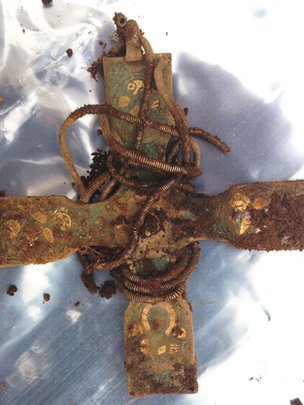
I wonder if the Vikings were raided this time round, and someone stashed their stuff for a change. It would be great to hear a back story emerge from this, if the haul was found near foundations for a building etc.
Either way, seems like a good time to take a trip down to Dumfries and see what else is lying around!
Good find Gortex, this is uber cool. Here's one of the crosses from Dumfries he found - it looks like the enamel is intact, very very pretty.

I wonder if the Vikings were raided this time round, and someone stashed their stuff for a change. It would be great to hear a back story emerge from this, if the haul was found near foundations for a building etc.
Either way, seems like a good time to take a trip down to Dumfries and see what else is lying around!
a reply to: gortex
Amazing find! Can you imagine being the one who discovered these spectacular treasures!? Derek McLennan is one lucky guy.
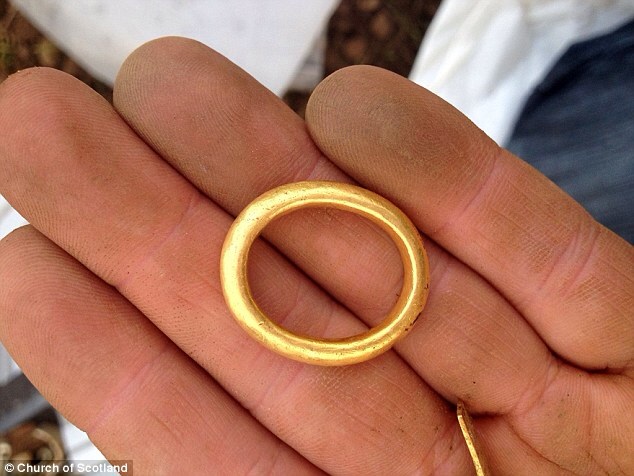
I wish there way a way to know the story of the person who wore this ring so long ago.
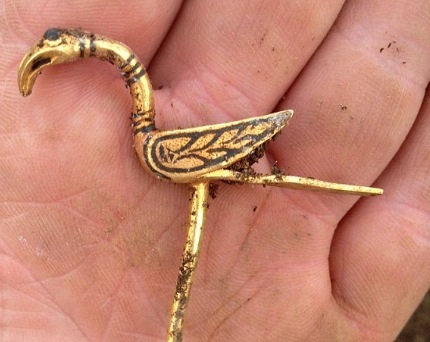
My husband and I have been thinking about getting a couple of quality metal detectors, unfortunately we wouldn't find anything in Northern California that's as old as this find.
image source
Amazing find! Can you imagine being the one who discovered these spectacular treasures!? Derek McLennan is one lucky guy.

I wish there way a way to know the story of the person who wore this ring so long ago.

My husband and I have been thinking about getting a couple of quality metal detectors, unfortunately we wouldn't find anything in Northern California that's as old as this find.
image source
new topics
-
This should be plastered all over the airwaves
Mainstream News: 2 hours ago -
Oh, Good Gosh. “Kremlin Warns Stay Away from Greenland.”
World War Three: 4 hours ago -
Archbisop Vigano Warns of Deep State and Deep Church
New World Order: 4 hours ago -
A Flash of Beauty: Bigfoot Revealed ( documentary )
Cryptozoology: 10 hours ago
top topics
-
This should be plastered all over the airwaves
Mainstream News: 2 hours ago, 11 flags -
Fire insurance in LA withdrawn months ago
General Conspiracies: 13 hours ago, 9 flags -
Oh, Good Gosh. “Kremlin Warns Stay Away from Greenland.”
World War Three: 4 hours ago, 9 flags -
A Flash of Beauty: Bigfoot Revealed ( documentary )
Cryptozoology: 10 hours ago, 7 flags -
Archbisop Vigano Warns of Deep State and Deep Church
New World Order: 4 hours ago, 7 flags
active topics
-
Los Angeles brush fires latest: 2 blazes threaten structures, prompt evacuations
Mainstream News • 319 • : BeyondKnowledge3 -
Trump says ownership of Greenland 'is an absolute necessity'
Other Current Events • 126 • : Imhere -
Fire insurance in LA withdrawn months ago
General Conspiracies • 30 • : WeMustCare -
To become president, Zelensky had to learn Ukrainian
Political Conspiracies • 37 • : Oldcarpy2 -
This should be plastered all over the airwaves
Mainstream News • 18 • : Bluntone22 -
Oh, Good Gosh. “Kremlin Warns Stay Away from Greenland.”
World War Three • 11 • : xuenchen -
Judge rules president-elect Donald Trump must be sentenced in 'hush money' trial
US Political Madness • 90 • : xuenchen -
S.C. Jack Smith's Final Report Says Trump Leads a Major Conspiratorial Criminal Organization!.
Political Conspiracies • 49 • : xuenchen -
The elephant in the room (wearing a hoodie)
US Political Madness • 32 • : xuenchen -
Post A Funny (T&C Friendly) Pic Part IV: The LOL awakens!
General Chit Chat • 8012 • : underpass61
16
